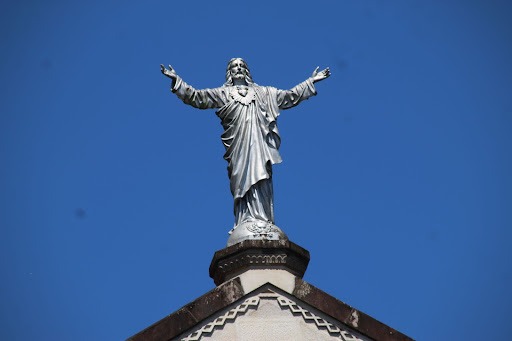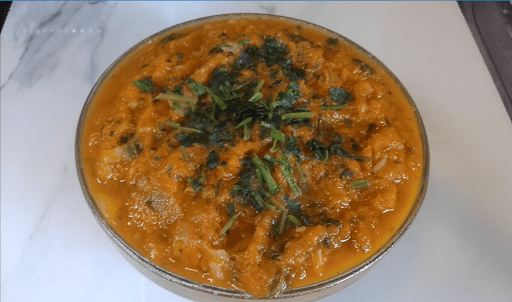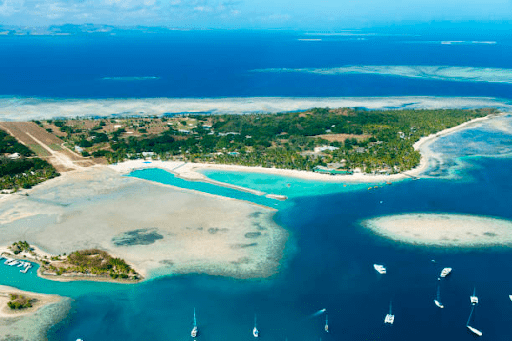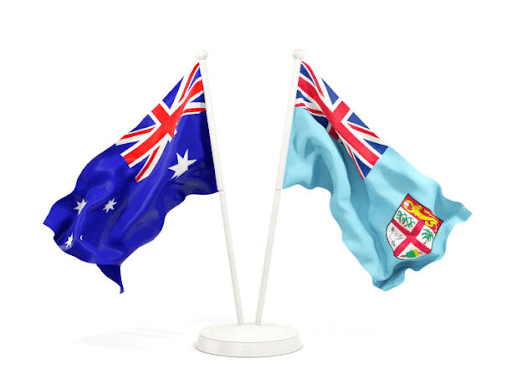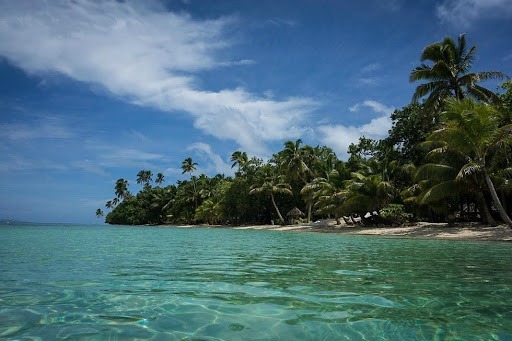The Cathedral beside Fiji’s central bank
In the heart of Suva lies the Sacred Heart Catholic Cathedral or Vale Vatu (Stone house) in Fijian, a structure that would teleport you to old European gothic architecture when seen for the first time. This structure would seem so out of place and easily forgotten at the back of the city, specifically with the fast-paced measure of Fiji’s development and life today. But it still remains important for the Pacific Catholic Archdiocese and the national Catholic body. It has also played an important role in the establishment and operation of a few chief institutions.
Backstory of the church and the bureaucracy of the Fijian Catholic body
The Fijian history website shares a 2-minute voice recording, an interesting paragraph and a timeline of key events about the cathedral. It is quite exceptional for those not interested in a long read but for those into story-telling, buckle up your seats for this ride. It involves colonialism, the Catholic church, of course and Fiji’s central bank, the Reserve bank of Fiji.
The church was consecrated and opened in 1902, but construction had primarily begun in the late 1800s. Plans initially started in 1888 when Rev Dr. Julian Vidal, the first Roman Catholic Bishop of Fiji, engaged Father Rosier of New Caledonia for stone masonry designs. Excavation for the cathedral’s crypt began in 1892 and was completed in 1896, with its first stone foundation set in 1894. The majestic silhouette of the cathedral is the result of finely sculptured sandstone that was transported all the way from Australia around the same year.
The cathedral was an initiative by the Catholic church in Fiji to set up permanency in the capital and move closer into the metropolitan area, after the move from Levuka in 1881 and originally setting up a church in Toorak around 1885. Rev Julian Vidal bought a piece of land in the centre of Suva, land-locked between present-day Ellery and Pratt street. The address of the cathedral is listed on Ellery, but the main entrance of the cathedral or perhaps the main doors are on Pratt street side.
The Catholic church, playing a part in regional migration, also brought in workers from Wallis and Futuna to assist in the construction of the cathedral in the year 1885. These workers were then settled on catholic land known as Villa Maria in Nabua, just below Mead Road. After years of financial setback, fundraising by the congregation and change of supervision over its construction, the cathedral was finally completed in 1994. The Rev. Petero Mataca, the only indigenous Fijian to become the Archbishop of the archdiocese of Suva, is entombed in the cathedral’s tomb.
The cathedral and its property is the bureaucratic stead of Fiji, known as the ‘Archdiocese of Suva’, and looks after the regional diocese of Rarotonga (Cook Islands), diocese of Tarawa (Kiribati) and Nauru, and the suffragan diocese of Funafuti (Tuvalu).
Interesting facts about The Cathedral in Fiji
The cathedral is one of only a few in Fiji and contains some interesting features inside and on the property. The statue of Jesus situated on the front gable of the cathedral was constructed in 1901. The stained glass stationed above the altar contains a ‘Bilo’ (Cup made out of coconut shell used for kava drinking or Yaqona ceremonies) that is placed underneath the heart of Jesus. Perhaps, it resembles an interesting perspective of Catholicism in a foreign land, and the incorporation of an indigenous culture into Catholicism. Moreover, a statue of Mary was erected in the parish grotto, which was later damaged in 2020 and replaced in 2021.
Sacred Heart is one of the few cathedrals of the Fiji Roman Catholic body in the country, the other few belong to other Christian denominations. One might also wonder about the buildings surrounding the cathedral such as that of a school, the office of the archdiocese of Suva and other buildings. These buildings are a result of Father Julian Vidal’s initiative to set up convents and schools with every existing Catholic church in the country. Hence, the reason why an all-girls primary school called ‘Saint Annes’ is located toward the top of Pratt Street, and was opened in 1932. Beside the school is a building for the ‘Fiji Catholic Teachers Association’. Right next to the church (right) is the office of the Archdiocese of Suva, known as Nicholas House. The house first built in 1956 was demolished and a new building was constructed at its present location in early 1979. The building was officially opened in May of 1980.
Hearsay about the bank next door
The Reserve Bank of Fiji is the nation’s primary central bank and located right next to the cathedral. In fact, the cathedral and bank are only separated by a neatly aligned number of trees, known as Cycadales.
The story of how these neighbours came to be, involves one character, the indigenous Paramount chief of Lau (eastern islands) Ratu Sir Kamisese Mara, Fiji’s first Prime Minister and later President in the 1980’s. Raised and remaining a staunch catholic, Ratu Mara may have bought the land from the catholic when seeking land for the institution. Another version suggests that the building remains under Catholic authority and has the central bank and other institutions leasing within the establishment.
Documentation hasn’t been easily available about this transaction nor anyone forthcoming about the information but there have been many stories regarding the cathedral and the bank. One thing, however, remains clear, Ratu Mara and the catholic church continue to be recurring characters in this story. In addition, the Reserve Bank of Fiji was opened in 1984 by Ratu Mara.
The cathedral continues to remain a vital part of the capital and Fiji’s colonial history and heritage. Fiji, as a country, offers mostly nature for adventures, but for those looking for something more, this is highly recommended especially for history buffs and those keen on learning new things.

